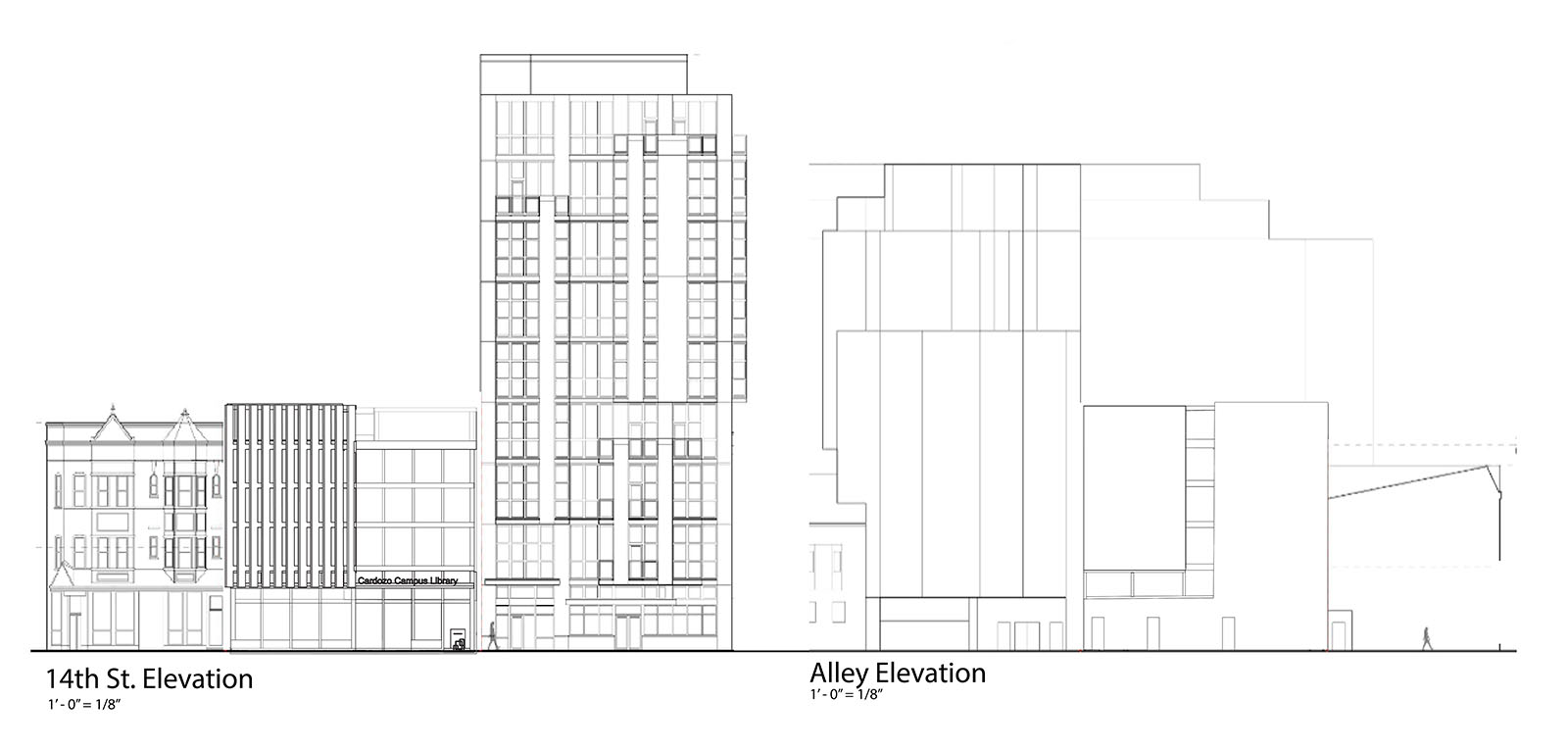This final project is a culmination of the Level 1 experience, incorporating and developing the issues addressed throughout the year. Principles of procession and space making, functional organization, climate design, and room and façade design, are explored in an urban context. Students were asked to design a community library in the U-street neighborhood of Washington, DC (site dimensions: 60’ x 106’). The library first and foremost must be ‘customer-focused’, or simply put, designing for effective use.
The library must relate comfortably to the other buildings on either site, yet have its own character and identity. The cities are not nostalgic for historic styles, and there are no Fine Arts Commission constraints on these blocks. Students developed a narrative for the building as part of the process of establishing its character.
Given that bookstores are quickly disappearing, libraries are designed more like retail spaces with large storefronts and large glass panes in the exterior at ground level for visibility of the reading rooms from the outside; this creates a welcoming feel for patrons. Libraries are also about “connections”, connections with the community, the librarian, and friends.





